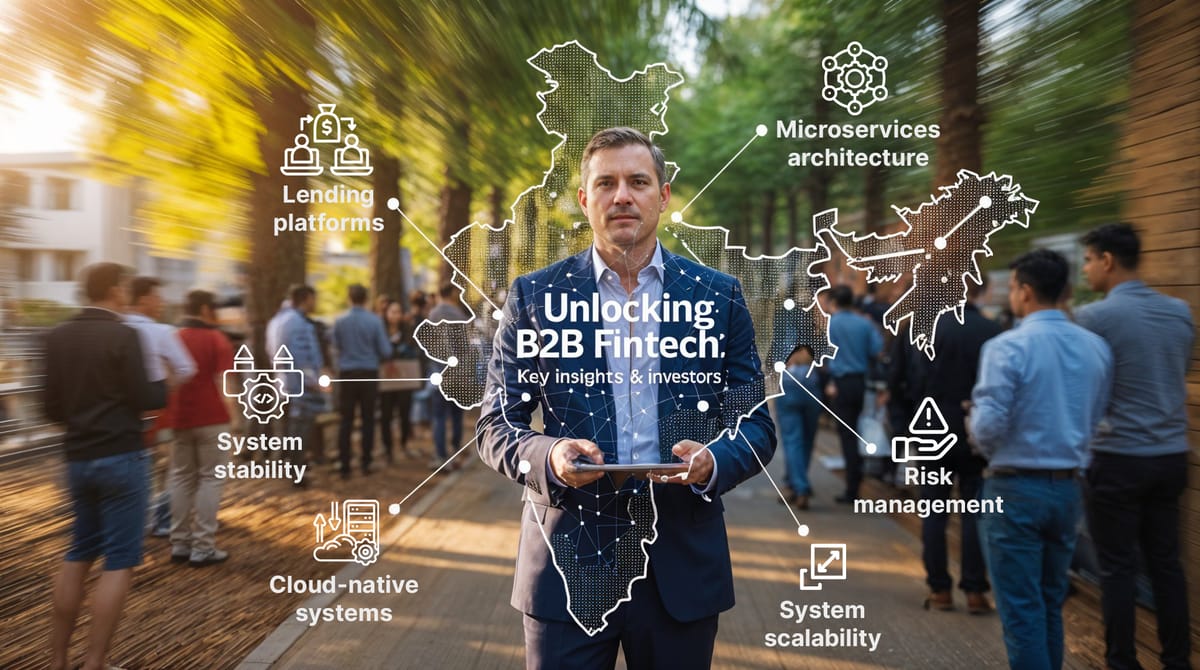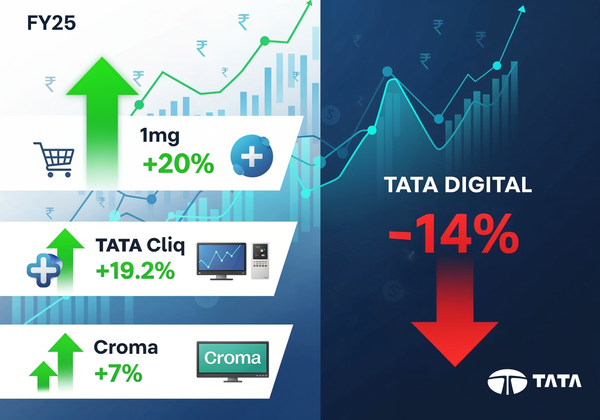India's fintech market is currently in the midst of a major transitional phase, and while the spotlight is more often cast on consumer-facing products, it is the B2B fintech industry that is reshaping the financial sector bowels of businesses, MSMEs and financial companies.
The prosperous future that is envisaged for this sector, with a market size anticipated to be $20 billion by 2030 with backed up projections of an intense level of growth. We will look into the 2011 trends in the B2B fintech industry in India, where do investment opportunities lie and the future of the industry which is extremely important.
Current Trends Driving B2B Fintech Growth in India
India’s fintech ecosystem is undergoing a transformative shift, and while consumer facing solutions often steal the spotlight, B2B fintech sector is the one which is easily changing the financial blood vessels of the companies, MSMEs, and financial institutions. The predictions as per a reports fintech which is estimated to grow by USD 20 billion annually from now to 2199. Let’s delve into the B2B fintech in India and see the promising investments as we try to foresee the most probable events of the industry in the future.
1. The increase in the use of digital solutions in enterprises' operations
B2B fintech platforms are simplifying tough processes through the integration of electronic workflow and the compliance to the enterprise systems. This trend is completely restructuring the way in which companies and MSME manage their financial affairs, giving them not only the added value of the structure but also a more sustainable market than that of the consumer side. The focus on reliability ensures seamless integration and stability, which institutional stakeholders prioritize over design enhancements.
2. The use of systems across supply and treasury chains
We can describe the innovations in equipment in the fintech of B2B as the integration. CRM, which is one of these new solutions, has really opened new oceans of possibilities, where trade finances have become cross-functional by allowing for automatic documentation and connection of buyers, banks, and logistics agents. In addition, the new payment platforms continue to involve in the treasury sector, giving CFOs
3. Compliance as a Competitive Edge
India has a fragmented regulatory landscape that requires fingertips solutions for MSMEs, taking into account GST compliance and different digital maturity levels. There is no more Regulatory technology (RegTech) that only supports as a solution an entire infrastructure. The platforms that facilitate KYC, real-time monitoring, and reporting are set to become the system's vital parts since the regulatory checkup is getting more severe day by day.
Investment Opportunities in B2B Fintech: Where to Bet Big
Although fintech funding went down by 33% y-o-y amounting to $1.9 billion in 2024, B2B fintechs have managed to still raise over $500 million to affirm that investor faith in infrastructural solutions is high. The investment areas are detailed as follows:
- MSME Platforms for Digital Enablement Indian
Micro, Small, and Medium Enterprises (MSMEs) are still not fully digital. They are still in the dark and in the lowest comfort level from the digital aspect and they still struggle with payments, access to credit, and even payroll management. In this respect, thanks to the integration of the digital public infrastructure like GSTN and UPI, and the augmentation of their usability via Gen AI processes, growth becomes certain. Furthermore, the entrepreneurs have to aim for those most innovative companies which will plug the holes in the local market while at the same time using these products-friendly solutions,
- Embedded Finance in Digital Networks
In a time when ONDC is trying to make a name for itself, embedded financial tools equipped with cloud-based procurement, HRMS, and logistics systems are on the rise. There will be substantial changes in the business world if these kinds of solutions come true as the latter imposes on the users a high degree of transaction relevance. Venture capital that is keen on scaling, high-impact, and profitable businesses will undeniably become potential investors in these solutions as they are seen to have a greater impact.
- Cross-Border Payment Solutions
The Indian businesses with their global expansion strategies are thriving a market for ease of the cross-border payments, FX management, and tax compliance solutions. Initiatives like Skydo and TazaPay are the ones to note in this genre because they introduce a new facilitated way to make international transactions.
- AI-Powered Decision Support Tools
The large and mid-sized businesses that face the pressure of margins and market turbulence are actively looking to use AI as a way of solving forecasting, cost modeling, and analytics needs. The market for channel productivity software and decision support systems such as Finstinct.ai, Vymo is also up for sale as the wave of automation is about to sweep in.
The Future Landscape of B2B Fintech in India
The following 10 years will see if the B2B fintech industry in India grows into a hydro to the country’s monetary history. The Builders & Investors Guide underlines that the new decade demands a financial transaction system consisting of the following three aspects: reliability, infrastructure, and regulation.
On the other hand, startups that focus on stable ROI, legality viabilities, and a smooth and low switchover of clients will get a step ahead over those who chase after futile growth in a short time, or long but unsustainable.
When public infrastructure matures, compliance becomes stricter, and the enterprise is adopting at a faster rate; it will be an opportune time for B2B fintech innovation. Venture capital has to go for applications that are durable and not just the ones that operate just for a little while.
Founders who create with clarity, carry out with exactness, and manage the sales process even when it is slow, that will lead the way. The guide reiterates that it is only through putting those ideas into practice as well as building trust that will keep one on the top position not the idea. This is a domain of high regulation and that requires a high capacity for work.
Conclusion: Why B2B Fintech in India is the Next Big Thing
Co-authored by myself and Canute S. and this is A month earlier, the leader of an influential blockchain and cryptocurrency-oriented program in the country said: "B2B fintech in India is no longer a niche; it's a cornerstone of the nation's financial evolution."
In simple terms, the industry is similar to digital marketing, part of which is about making out a QR code explosion in the fintech sector of 2020. Operator and End-user led development and the collective building economy are two examples of local innovations, which are the most promising in the financial technology area. Coping with a few emerging judicature is another regulatory constraint.
However, the trade and industry laws are an inadequate and unsuccessful T. cells the approach of strictly registration-based decentralized finance.









Member discussion